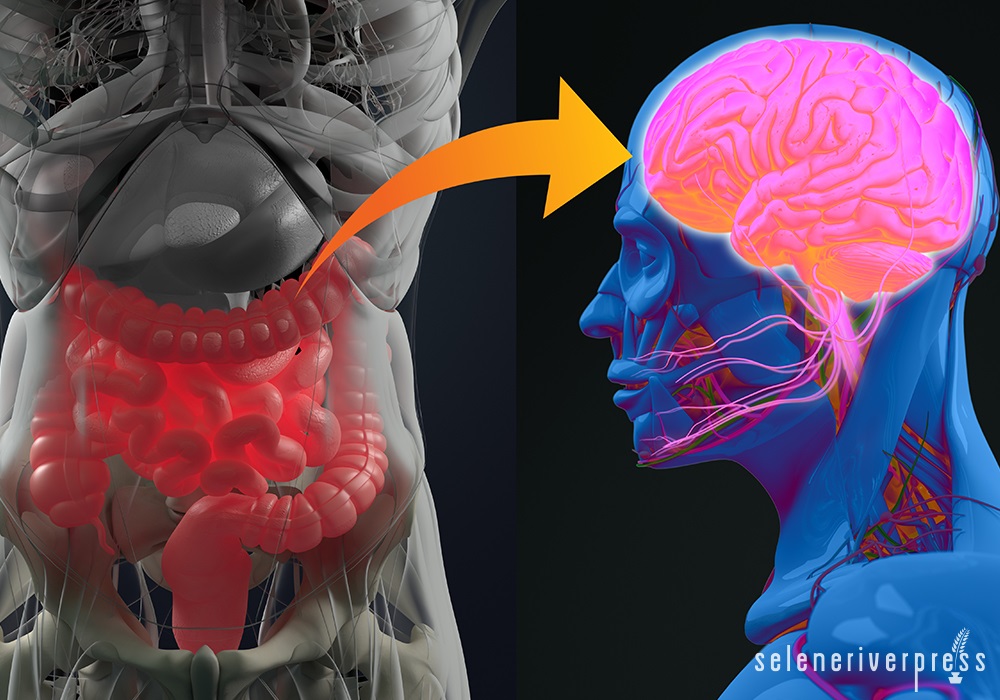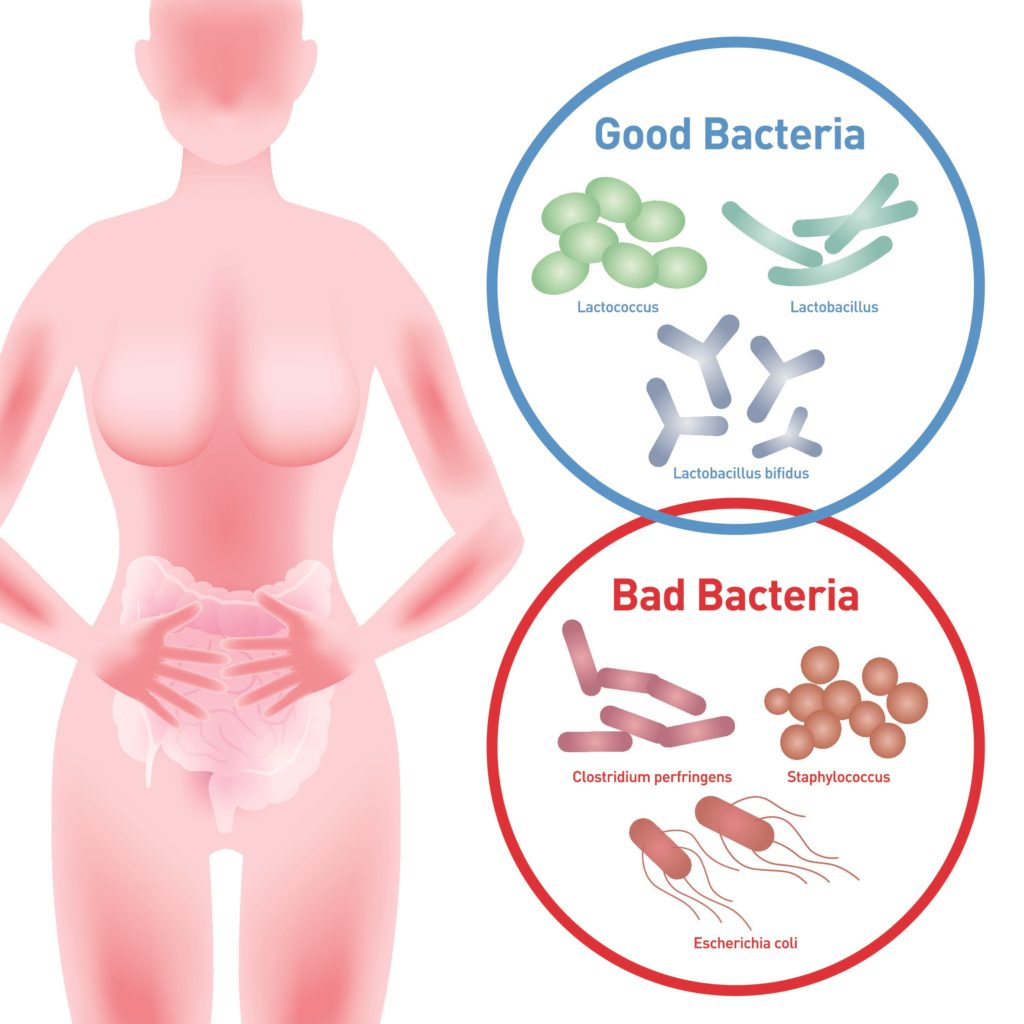When my clients describe the following, I immediately know what they are talking about: “gut signals.”
A sudden and anxiety filled awakening that often comes in the super early-morning hours, approximately 3 AM—though symptoms may also come at other times of the day, depending on many factors. Since I frequently hear more about the 3:00 AM phenomena, I’ll dedicate this blog post to those specific symptoms, but the solution is pretty much the same even if they occur come at other times.
Thanks for taking the time to read about your “second brain.”
The action of this phenomenon is to jolt us out of a sound sleep, robbing us of our slumber like a thief in the night. It feels like a sickening sense in the pit of the gut that something really bad is about to happen. Anyone out there identify?
Whether you call it butterflies, fearfulness, or severe anxiety, I’m here to tell you that these feelings are signals coming from the second brain—your gut! Now you’re probably saying, “No way, we don’t have a second brain in our gut.”
But yes, we do, and if you keep reading, you too will believe!
This experience causes many of us to literally bend over with a paralyzing sense of discomfort. Sadly, some think the remedy is taking some type of sedative or a “calming” medication—hopefully, not booze! These episodes tend to leave us with questions about why we get these weird anxiety attacks and the wish that we knew how to stop them.
When a close friend of mine started to experience this problem, she asked me if I thought she was going crazy, or if it could be the onset of a more serious anxiety issue. After we talked, I decided would try to give my friend—and my readers—a basic understanding of this type of anxiety and what we can do to decrease its frequency.
Interesting Anxiety Statistics
The following statistics are taken directly from website for the Anxiety and Depression Association of America (ADAA):
- Anxiety disorders are the most common mental illness in the S., affecting 40 million adults in the United States age 18 and older, or 18.1% of the population every year.
- Anxiety disorders are highly treatable, yet only 36.9% of those suffering receive treatment.
- People with an anxiety disorder are three to five times more likely to go to the doctor and six times more likely to be hospitalized for psychiatric disorders than those who do not suffer from anxiety disorders
- Anxiety disorders develop from a complex set of risk factors, including genetics, brain chemistry, personality, and life events.”
Personal note: I would like to add a fifth and very important point not mentioned in any of other the statistics I’ve read. What is it? The health of the “second brain.”
A Basic Look at the Second Brain
According to the research, the scientific name of the second brain is the “enteric nervous system” (ENS). With more than 100 million nerve cells, the ENS is made up of two thin layers that line your gastrointestinal tract from the esophagus to the rectum. It controls the digestive functions related to swallowing, releasing enzymes, and breaking down food.
The ENS isn’t capable of actual thinking, but it does have the capacity to communicate any changes in mood, body chemistry, and hormonal levels—all of which may regulate or induce anxiety and even depression—to the brain in our head.
What an Expert Says
Dr. Jay Pasricha, Director of the Johns Hopkins Center for Neurogastroenterology,
states in a number of his books that, for the past several decades, researchers and doctors mistakenly believed that anxiety and depression contributed to IBS, constipation, and diarrhea. But Dr. Pasricha’s own studies show that it’s the other way around. Irritation in the gastrointestinal system may send signals to central nervous system (CNS) that trigger mood changes. This may explain why a higher than normal percentage of people with IBS and functional bowel problems develop depression and anxiety.
Healing the Second Brain Gone Rogue
Now that I’ve given you a basic understanding of this extensive subject, we can move on to the nutritional and hormonal aspects of gut health, including how they work to contribute to a healthy enteric nervous system. A healthy ENS allows our second brain to function normally—without waking us up at that dreaded predawn hour.
There are two major ways of balancing the enteric nervous system. Both of them have given my clients relief, and in some cases complete resolution:
- Normalize the function of your adrenal gland and cortisol output.
- Change your diet to include lots of probiotics, prebiotics, good fats, and complex carbohydrates at right time of the day.
Why Cortisol Matters to the Enteric Nervous System
I found a clear, easy-to-follow article at ExperienceLife.com that does a great job of describing this unique hormone. It explains how malfunctioning hormone levels tend to follow a progression:
- High early morning cortisol levels
- High cortisol levels throughout the day
- High evening cortisol levels
- Low cortisol levels throughout the day
For the purposes of this blog post, I will only address the issue of high early morning cortisol levels because it coincides with the problem I describe above. The article is called “The Cortisol Curve,” and I highly encourage you to read the full article to learn about the other levels.
High Early Morning Cortisol Levels
The following is taken directly from “The Cortisol Curve” at ExperienceLife.com:
A healthy curve begins with cortisol levels highest in the morning, but not hours before dawn. Cortisol levels are normally lowest around 3 a.m., and then begin to rise, peaking around 8 a.m. If you routinely wake up hours before dawn in a state of anxiety, your cortisol is overachieving and spiking too early. This could be happening if:
- You rarely sleep through the night.
- Your mind is racing the moment you wake up.
- You’re edgy and confrontational in the mornings.
- Your energy crashes and burns sometime around midmorning.
Steps to Normalize Your Cortisol Levels & Restore Gut Sanity
The good news is that you can start today to normalize your cortisol levels, restore the health of you second brain, sleep through the night, and be from anxiety and depression the next day. Taking the first step may seem like being asked to go to Mars to explore the red planet! Nevertheless, if you’re truly tired of the roller coaster you’re on, you must come to terms with the “easy does it—but do it” approach. So how about we get started?
Adrenaline and Cortisol: Two Hormones that Cause Havoc!
To learn more, I encourage you to read my blog post “Belly Fat Simplified.” I quote from a helpful passage:
Due to the complexity of this subject, I’ll only discuss what happens with two of the major hormones when they’re not in balance: adrenaline and cortisol, both of which are produced by the adrenal glands. (Note: The adrenal glands are encased in layers of cholesterol, which is why cholesterol is such an important component of healthy adrenals.)
The adrenaline hormone serves as a warning signal that danger is afoot. It accelerates our heartbeat and increases our rate of breath. It can also produce hyperventilation and asthma-like effects, as well as anxiety, fear, and other symptoms. Adrenalin causes multiple chemical changes in our brains and bodies to help us defend ourselves from whatever danger we’re in—or those we perceive we’re in! In due time, consistent overstimulation… [and under-nourishment] may cause adrenal fatigue.
Once the adrenals reach this dangerous stage, cortisol becomes dysfunctional. It can no longer do its job of moderating our blood sugar levels and controlling how our bodies use fuel sources (fats, carbs, and proteins). This can cause dysfunctional aerobic/fat burning action so we burn more sugar and less fat. The end result is, of course, belly fat, thigh fat, butt fat and emotional distress.
Personal note: Consuming butter, lard, tallow, and other saturated animal fats will maintain that warm cholesterol cushion so vital to the adrenaline glands. But keep in mind that coconut oil is a saturated fat that contains no cholesterol. Therefore, it may not be the best fat for this purpose.
At the end of this blog post, I discuss some necessary whole food supplements that will substantially nourish these two hormones.
The Probiotic Angle to Nourish Your Second Brain
Excerpted from by blog post “The Tremendous Benefits of Lacto Fermented Foods”:
Wonder foods that are fermented (not pickled in vinegar) may help protect against infections and fungi. Fermented foods and beverages also provide fiber, which aids digestion and could help prevent serious digestive disorders that may be the root cause of many illnesses. As described in Making Sauerkraut and Pickled Vegetables at Home by Klaus Kaufmann and Annelies Schoneck, the benefits of lactic acid are numerous. Here are just a few:
- Prevents decay, not only in food but in the bowels.
- Stimulates the peristaltic movement of the intestines.
- Assists in the circulation of the blood.
- Has a harmonizing effect on the stomach, strengthens the acidity of the gastric juice when production lags, and reduces acidity when production is up.
- Relieves the burden on the digestive system by significantly improving intestinal digestion.
- Increases nutrient absorption.
Along with the benefits of nourishing your internal organs, you should give lacto-fermented foods a daily try and see if you don’t feel the energy and goodness of using foods that are not just raw, but as Sally Fallon says in her many videos, “super-raw.” Good looks and youthfulness are a billion-dollar industry, but we struggle to keep our youthfulness using products that attempt to keep us younger from the outside in, instead of the way Mother Nature intended—from the inside out!
For a great tutorial on lacto-fermented foods, see my Cook Your Way to Wellness DVD.
The Prebiotic Angle to Nourish Your Second Brain
Prebiotics are also known for their special content of inulin, which is a special type of fiber in some foods. By its nature, inulin is considered a prebiotic fiber that the body uses to create a probiotic effect in the colon. Since probiotics ultimately provide maximum colon health, we might ask why bother with prebiotics rather than just consume probiotics?
The simple answer is that even after all we’ve learned about the vital importance of making our own probiotics, we still don’t take the time to do so. That being the case, it’s essential that we eat a good deal of prebiotic fiber so it can convert into probiotics in our colon. Better yet, we should combine both probiotics and prebiotics in our diet. To learn more about these essential prebiotics, I invite you to read my blog post “Resistant Starch Basics.” It will introduce you to new food facts that are vital for the restoration of the second brain!
Whole Food Supplements to Help Correct Hormonal Issues
Diaplex – This excellent product addresses blood sugar handling imbalances for both prediabetics and diabetics.
Symplex F – Indicated for overall endocrine system support. Used for premenstrual symptoms, hot flashes, hypo/hyperthyroid, adrenal conditions, and sympatric autonomic nervous dominance.
Lactic Acid Yeast Wafers – Lactic acid, the primary ingredient in lacto-fermented foods, is what feeds the intestinal flora and maintains the correct pH in the gut.
Afterthoughts from the Traditional Cook
“All of us experience change in our lives. Change is the one constant in our lives. There are changes that we look forward to and changes that we fear. However, one thing is for sure. Things will not stay the same no matter how much we would like them to. When a life change occurs, we have two choices in how to respond. We can despair that a change has come and assume that things will be worse, or we can look with excitement at the new possibilities for personal growth and change in self that the change presents.”
—From FamilyFriendPoems.com
Note from Maria: I am a Certified Natural Health Professional, CNHP, not a medical doctor. I do not diagnose, prescribe for, treat, or claim to prevent, mitigate, or cure any human diseases. Please see your medical doctor prior to following any recommendations I make in my blogs or on my website.
Images from iStock/ChrisChrisW (main), AntonioGuillem (woman with stomach pain), Shidlovski (cortisol), chombosan (good and bad bacteria).





